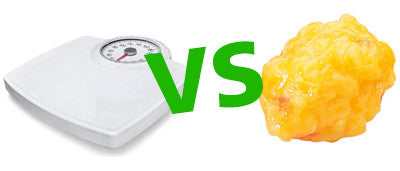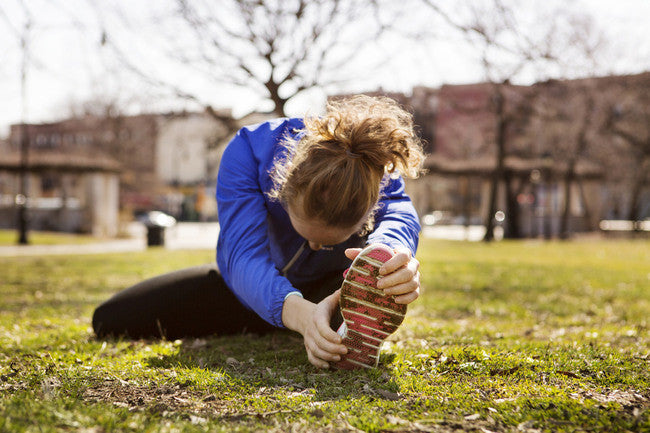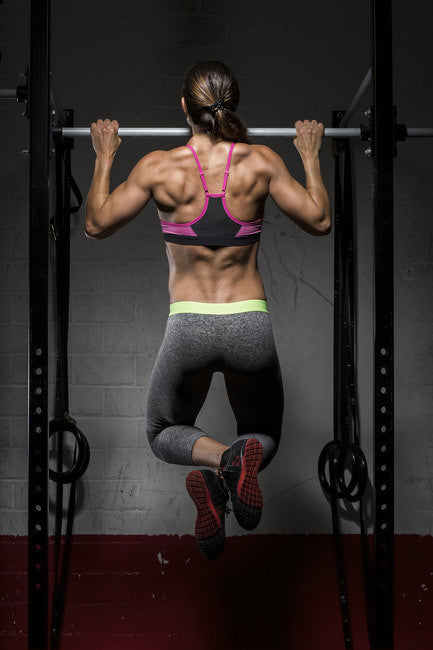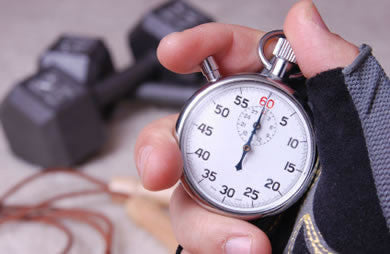Your cart
Order special instructions
Discount
Discount invalid. Please make sure the discount details are correct.
Discount code is already applied.
Discount applied!
FLEXPRO CONNECT

FLEXPRO CONNECT
by Mackenzie Diekmann on Mar 02 2016
Carbs have caught quite a bad reputation in recent years due to the Adkins Diet and the gluten free craze, but do you really need to throw them out of your diet altogether? It is true that when eaten in excess, or at the wrong times, carbs can be your enemy. But, if used correctly, carbs can be one of your top allies! Carbohydrates are your body's go-to source for fueling workouts and giving you enough energy to get through your day. Without them you will become pretty fatigued early on in the day. That's no good! So How Many Carbs Do You Need? This all depends on your goals and your activity level. A person who is pretty sedentary is not going to need the same amount of carbs as some one who is an avid runner or weight lifter. The chart below will give you a good range of how many carbs you should be shooting for each day:
Goals/Activity Level
Carbs
Weight Loss
0.9-1.25 g per pound of bodyweight
Active People
1-3 per pound of bodyweight
Sedentary
50-150 g of carbs per day
When to Eat Carbs: The timing of your carbs is also something to take into consideration. Most nutrition experts recommend eating the majority of your carbs early in the day (breakfast) and as a part of your post-workout meal or shake. This will ensure that the carbs you intake are converted to energy instead of fat. What Carbs to Eat Not all carbohydrates are created equal! When choosing which carbs should be a part of your diet, be sure to stay away from food that is high in sugar and opt for whole wheat/grain options. Foods like brown rice, quinoa, couscous, sweet potatoes, red potatoes, whole grain pasta, and whole grain breads are pretty good choices.
There are so many healthy options, you're sure to find one that you love!

FLEXPRO CONNECT
Losing Weight vs. Losing Fat - What's the Difference?
by Mackenzie Diekmann on Feb 03 2016
Weight loss and fat loss are two huge buzzwords used in our society today. It seems like everywhere you turn there are products or services promising you weight loss or fat loss. Often, these two terms are used interchangeably even though they don't necessarily mean the same thing. But how are they different? Let's talk about losing weight vs. losing fat and what exactly the difference is! Let's Clear Some Things Up:
Weight Loss: When you lose body weight, which is the sum of your muscle, fat, skin, hair, bones, organs, etc.
Fat Loss: A more specific type of weight loss that occurs when only your body fat decreases.
The Problem with the scale: Most people wanting to lose weight are actually only wanting to lose body fat. When they step on the scale and see their weight fluctuating for other reasons like hormone changes, water retention, muscle gain/loss, etc., they become discouraged and confused when in reality the scale is just not a reliable tool to calculate body fat percentage. Clothes, mirrors, and pictures are all better indicators of fat loss than a scale. A tool that can help you accurately track your fat loss progress is a fat caliper. It's a cheap and easy way to measure your body fat percentage. The table below shows the ideal body fat % for men and women according to The American Council of Exercise (ACE):
Women
Men
Minimum Fat Needed to Live
10-13%
2-5%
Professional Athletes
14-20%
6-13%
Fitness Junkies
21-24%
14-17%
Average
25-31%
18-24%
Overweight
32% and up
25% and up
Train to Lose Fat, Not Muscle! Part of the fat loss equation comes with the time you put in the gym. Many people who want to lose fat quickly do tons and tons of cardio all day, every day. Cardio is great, but like all things, too much of a good thing is not so good. Doing only cardio can result in muscle loss instead of fat loss. Instead a better/smarter way to exercise is to do weight training while adding in some cardio a few days/week. HIIT Training is a great cardio option for you to add into your fitness regime. Click here to lean more about HIIT!! The Bottom Line
When it comes to losing body fat, what you eat is 75% of the battle. Eating junk, eating too much, or even eating too little can hinder any fat loss program no matter how hard you train.
Don't let the scale get you down-- you can still be losing body fat and making progress even if the scale is not moving or going up!

FLEXPRO CONNECT
7 Benefits of Stretching & How to Integrate with Your Fitness Routine
by Mackenzie Diekmann on Dec 11 2015
7 Benefits of Stretching
Stretching has the ability to prevent a lot of problems!
Among the fitness community stretching is often overlooked because the results are not as visible as lifting weights or doing cardio. However, if you've ever been injured or experienced chronic aches and pains, you can probably look back in hindsight and see that stretching would have saved you a bunch of grief. Not only does stretching offer benefits in the way of pain relief, it also has tons of other positive results that can make life a little easier.
Here are 7 reasons why you should incorporate stretching into your fitness regime:
Mood/Mind Booster- Stretching increases blood flow/circulation, sending lots of oxygen to your brain resulting in clearer thinking and better moods.
Butt Saver- If you have a desk job, sitting for that long can cause your glutes to atrophy (lose muscle), which can then lead to other problems like lower back and knee pain. Stretching your glutes and hip flexors regularly can prevent that.
Better Posture- When you consistently stretch, your muscles loosen up, leaving you less likely to assume the hunchback position.
Increases Athletic Performance- If you are an athlete or a fitness nut, stretching can increase your ability to do certain athletic moves.
Slows Aging- As you age, your body begins to lose mobility, resulting in less activity and more health problems. Stretching regularly increases mobility.
Prevents Injury- Stretching makes your muscles more elastic, making you less likely to pull or tear a muscle during activity.
Prevents Muscle Soreness- Consistent stretching will help your muscles recover quicker from tough workouts and prevent them from becoming as sore.
Not only does stretching have a lot of benefits, it's incredibly easy to integrate into your daily fitness routine. A good stretch requires no special equipment and can be done practically anywhere! Using your body weight you can gently stretch to help maximize your desired fitness results! Tell us your favorite stretch in the comments below!

FLEXPRO CONNECT
Pull-ups - Why We Do Them and You Should Too!
by Mackenzie Diekmann on Dec 10 2015
Pull-ups have long been considered one of the most fundamental exercises in creating a strong back and that ever-coveted V-taper many guys desire. Being able to preform pull-ups is considered by many organizations, like the military, to be an indicator of superior physical fitness. However, pull-ups provide a lot more benefits than just looking good and impressing people. Here are just a few of our favorite benefits: 1. Compound Upper Body Move- Not only do pull-ups target your upper-back muscles, your biceps, forearms, shoulders, & core also come into play when preforming a pull-up. 2. Variation Variety- There are tons of pull-up variations you can do all depending on your hand placement. Each type targets your muscles differently. For instance, a chin-up incorporates more biceps while a close-grip pull-up targets more of your forearms. 3. Increasing Intensity is Easy- As with every other exercise, you must continually increase the intensity in order to grow and avoid a plateau. Pull-up intensity can be easily increased by simply doing more reps or adding weight with a weighted belt or vest. 4. Increased Heart Rate- Pull-ups use large muscle groups, so they will have your heart rate pumping in no time! 5. Increase Grip Strength- Pull-ups are one of the best ways to increase grip strength which comes in handy for other weight-training exercises and climbing. 6. Convenient- Pull-ups can be done almost anywhere. You don't need thousands of dollars worth of gym equipment to do this exercise-- just your body, a bar, and gravity.
Don't Have Access to a Pull-up Bar?
Doorframe pull-up bars are relatively inexpensive and work great!
Check out your local running trail. Many of them have outdoor workout stations that include pull-up bars.
Head to the nearest playground and use the monkey bars.
If you have an open beam ceiling in your basement, use the beam as a pull-up bar
Head outside to your patio and use the edge of the deck or railing
Do you integrate pull-ups in your workout routine? Tell us how in the comments below!

FLEXPRO CONNECT
by Mackenzie Diekmann on Oct 05 2015
Get Ready to Burn More Fat in Half the Time!
If you've been to a gym or opened a fitness magazine lately you've probably have at least heard of the word HIIT, but what the heck does HIIT even mean? HIIT stands for High Intensity Interval Training, and it has very quickly become one of top trending ways to burn fat. Why? Because if done correctly you can burn up to 9 times the amount of fat than a traditional steady-state cardio workout would!How is it Done?HIIT is done by alternating high intensity exercises with low intensity exercises (or resting) for a set amount of time (20-60 seconds) and can be done with pretty much any bodyweight exercise including running, squatting, lunging, kicking, punching, jump roping, & more! Benefits of HIIT
Metabolism Increase- HIIT will speed up your metabolic rate for up to 48 hours after you've finished working out.
Fast & Convenient- Most HIIT routines are less than 30 minutes and you can literally do it anywhere since little to no equipment is required. Gone are the days of not having time to workout!
No Equipment Required- The only weight you need for HIIT is the weight your own body supplies. Most moves in HIIT routines use bodyweight exercises; although, feel free to add weighted moves to up the intensity.
Burns More Fat While Retaining Muscle- Studies have shown that over a 20 week period, people who consistently did HIIT routines burned 9 times the amount of body fat and retained more lean muscle mass over the people who just did low intensity, steady-state cardio.
Ready to give HIIT a try? Here are few example workouts for you to give a go!10 Minute Beginner HIIT Workout 3 rounds- 20 seconds high intensity, 10 seconds rest
Jumping Jacks
Squats
Jab, Cross (Right Side)
Jab, Cross (Left Side)
*30 seconds of rest in between each round
Advanced HIIT Workout3 Rounds- 45 seconds high intensity, 15 Second Rest
Burbpees
Jumping Lunges
Tricep Dips
Side Lunges
Push-ups
Tuck Jumps
Mountain Climbers
*1 minute of rest in between each round
Have you tried HIIT Before? Let us know your favorite workout in the comments below!
